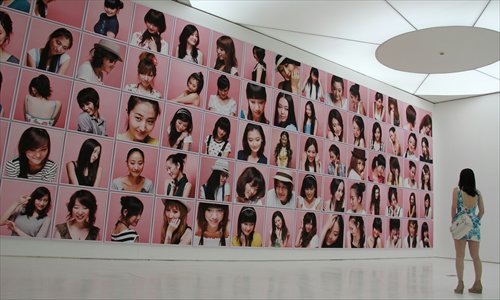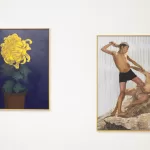积极空间 Alternative spaces in art

Maiden, All Too Maiden by Jiang Zhi Photo: Courtesy of Times Museum, Guangzhou
One of the most looked forward to contemporary art exhibitions this spring, Positive Space, is set to open on Saturday at the Times Museum in Guangzhou, Guangdong Province.
Differing from commonly seen solo or group shows at museums or galleries, Positive Space departs from the norm by not only presenting artwork but also launching an investigation into the comprehensive practices of small but active indie art institutions from all over China.
Twelve art institutions, most of which are run by artists, will be making their first ever museum appearance at the exhibition, including Beijing's Arrow Factory and Floor No.2 Press, Shanghai's Am Art Space, Wuhan's Yangtze River Space, Chongqing's Organhaus Art Space and the Guangzhou-based Observation Society and Store Space, among others.
In concert with the exhibition, the museum will also organize five seminars with artists, curators and researchers to discuss the topic of independent self-organization in contemporary art.
"The central concept of this exhibition is completely focused on indie art institutions in China today, most of which are not focused on profit and remain small scale," said exhibition curator Bao Dong, whose rich curatorial portfolio includes On|Off, a major survey show of China's young artists at the Ullens Center for Contemporary Art in Beijing in 2013.
First-hand experience
Bao Dong, a 35-year-old independent Beijing-based curator, has been researching the phenomenon of independent art in China's contemporary art scene for many years. This time he has extended the scope of his research to indie art institutions.
"I've collaborated with most of the 12 art institutions in this show before," said the curator. "I'm very familiar with each of them, so my curatorial approach is based on first-hand experience instead of acting as a third party."
According to Bao, the floor plan of the exhibition has been organized into a neighborhood like arrangement, with each participating art institution allocated a certain room to present its own works. In doing so, he believes that viewers will be able to better experience the exhibition.
Nowadays, an increasing number of indie art institutions are emerging in major cities throughout China, especially in areas where contemporary art is well recognized. However, compared to larger public art institutions and commercial galleries, indie art institutions are still somewhat vulnerable; many of them only survive for a few years as they also face many economic and social challenges.
"Lack of public funding is one of the major problems that constrains indie art institutions," according to Bao's observation.
In fact, many indie art institutions rely on private donations and support from their founders to survive, such as Beijing-based painter Guo Hongwei's independent art space Gland, which is also featured in this exhibition.
Alternative art scene
The exhibition also endeavours to explore the dynamic between indie art institutions and the museum-gallery system. Considering the increasing commercialization and institutionalization of art in China, the rise of indie art institutions plays an important role as an alternative to the mainstream system.
For instance, Arrow Factory, hidden in a 15 square meter local house, acts as a purposeful artistic intrusion into a traditional Beijing hutong neighborhood, while Store Space in Guangzhou is set up in a local shop.
Looking to the future of indie art institutions, Bao's attitude is quite positive as he believes these institutions have much to contribute.
本文发表于环球时报官网
出版日期:2014年3月27日
作者:王懿泉
本文谈及的展览信息:
展览:积极空间
展厅:时代美术馆 19 楼西展厅
地址:广东时代美术馆
展期:2014.3.29-2014.5.4
This article was written in English.

